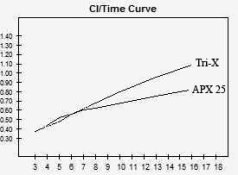I side with the "ISO speed is ISO speed period" crowd and I would like to offer a comparison.
In the digital domain, sometimes if you meter a scene "correctly" you find that the histogram does not arrive near the right edge of graph base. Some of the dynamic range of which the camera is capable is "wasted" by not using the part, near the highlights, where more details can be recorded.
So what the photographer does when taking pictures with a digital camera in such a situation? He intentionally overexposes the image, so that the histogram arrives "just" at the right end. This is known as the
Expose to the Right technique, or ETTR. One valid explanation is given here:
http://www.luminous-landscape.com/tutorials/expose-right.shtml
Having ETTR, a photographer would not say that the real ISO sensitivity he used for the scene is different from the theoretical, or scientific, or laboratory one. He just knows that ISO sensitivity is one thing, and where you "place your highlights" is another. He places his highlights on the upper part portion of the capture range of his camera, and then he "develops" (with the raw converter) in such a way that he compensates for his "intentional mistake" (which is not a mistake) which would have caused an overexposure. He makes the most of the material he uses. He can do this because he has this second "raw conversion" step so he has an added degree of freedom with the capture step. If he had to send in real time a JPEG out of camera, and he used this ETTR technique, in this situation he would send an overexposed image. But when using raw he doesn't care if an object of 18% reflectivity does not fall into "middle grey".
Now we go back to B&W analogue photography, where I think there is some kind of "expose to the right" logic, totally analogous to the ETTR of the digital world.
Nobody uses the B&W negative "as is". You have to make it pass through a second stage, printing. So the negative is your "raw file".
You might find that, in order to have the highest detail level in the shadows, you want to place your zone I just above the foot of the negative material. Supposing that you actually want middle grey in zone V in your final print, you don't care if, so exposing, zone V in the negative does not show a middle grey, because you are going to care about this during printing. What you want, is to expose a negative that will help you in reaching the effect you want in your final print. Given this, you might find yourself "exposing to the right" your negatives.
So, saying that the film sensitivity is not the declared one, because you might have a problem with the accuracy of you shutter, or diaphragm, or lightmetre, is IMO a logical and not just a semantic mistake.
Furthermore, exposing a negative in a way that gives you, after the necessary further step of printing, a more pleasing result, can be said and practiced without questioning the exactness of the ISO speed declared for the film. The ISO speed is the ISO speed. Simply, you don't care about exposing your raw negative for having middle grey in zone V.
I personally only work with slide film. If shutter speed, diaphragms, lightmetres and film speed were not in reality what they are in the laboratory, I don't think I could expose well a slide if not by chance. I expose my slides correctly because film, diaphragm, shutter and lightmetre all behave in practice as they do in the lab. The fact that "infallibly" I obtain middle grey in zone V means that ISO speed is the "exact" value in film, the value that gives you middle grey where you expect it, on film.
Fabrizio














